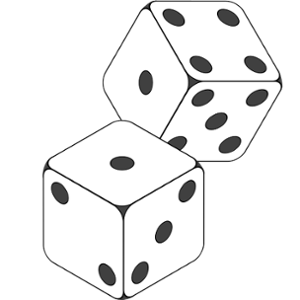Lab 13
Lab13: Processing array elements

Background
You will write today's program from scratch. Create a new Java class named ArrayPlay with a main method. For each step below, you should add code to the program without replacing prior code. When you are finished, this program will provide you with a reference for working with arrays including initializing, printing, and comparing.
Objectives
- Use an array to store a sequence of values.
- Display the contents of an array with a loop.
- Practice manipulating various types of arrays.
Key Terms
initializer list
list of values used to instantiate and initialize an array in one step
array.length
read-only attribute of an array that stores the number of elements
subscript
integer value in brackets [ ] that specifies an element of an array
ArrayIndexOutOfBoundsException
error raised when trying to access A[i] where i < 0 or i >= A.length
Part 1: Sequentially accessing an array
Whenever you are asked to do something to your array and then print it, you should finish the update step first and then have a separate loop to do the printing.
- In the main method, create a single array of integers that is 6 elements long.
- Initialize each of the array elements to the value -1 using a loop of your choice.
- In another loop, print each element of the array on a separate line as shown:
array[0] = -1 array[1] = -1 ... - Add code to change the value of each element of the array to its subscript. For example, array[3] should hold the value 3.
- Print the new contents of the array. You may copy and paste the code from step 3. (Your program should now print both versions of the array.)
- If you have not seen an ArrayIndexOutOfBoundsException, make one by causing a loop to read past the end of the array. What happens?
- Fix the code that causes the ArrayIndexOutOfBoundsException. Then add code to re-initialize your array contents to all zeros.
Part 2: Randomly accessing an array
Download Die.class for use in Part 3. Make sure it's in the same directory as your ArrayPlay.java file.
- Create a new Die object. (Refer to Die.html for documentation.)
- Create a loop that will iterate at least 100 times. In the loop body:
- Roll the die. (Don't create a new object, just roll it again.)
- Based on the result of the roll, increment the corresponding cell of your array.
The value of each array element should be the number of times that roll is made.
- After the loop finishes, print the results of the simulation. For example, if the array holds {20, 17, 19, 15, 12, 17} you would output:
1 was rolled 20 times. 2 was rolled 17 times. ...
Part 3: Working with multiple arrays
For this exercise, you will need two arrays of double values.
- Use an initializer list to assign one of the arrays to 10 double values of your choice.
- Instantiate the other array to store 10 elements, but do not initialize the contents yet.
- Print the contents of both arrays side by side on your screen. Label this output Before.
- Copy the contents of the first array into the second, then print their contents again. Label this output After.
- Finally, change the index 0 element of the first array to 99.0 and the index 5 element of the second array to 99.0.
- Again, print the contents of the two arrays side by side. Label this output After Change.
- Check that the contents of the two arrays are indeed different. If not, make the appropriate corrections.
Here is the expected output file for lab13.exp
Part 4: CodingBat Problems
For the remainder of today's lab, solve as many CodingBat problems as you can. At a minimum, you must solve three of each category. Remember to log into CodingBat first so you will receive credit.
- Quickly review the Warmup-2 problems that use arrays: arrayCount9, arrayFront9, array123, array667, noTriples, has271. All of them have solutions available; try to solve them first before looking at the answer.
- Solve at least three of the Array-1 problems. None of these problems require loops. Pick a variety of problems; don't just do the first three.
- Solve at least three of the Array-2 problems. Each of these problems requires one loop. You may find (on CodingBat's site) the Java Arrays and Loops help document useful.
Submit your ArrayPlay.java file via https://autolab.cs.jmu.edu by the end of the day. About half of your lab grade will be based on your CodingBat results.